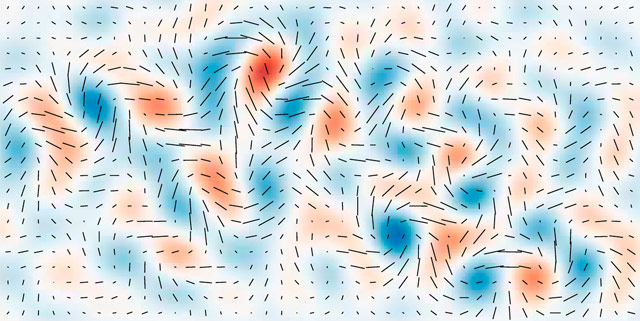Physicists “see” the Big Bang

This is huge: physicists have detected gravitational waves that harken back to the beginning of the universe, when it was “a trillionth of a trillionth of a trillionth of a second old”. The discovery goes a long way toward proving the inflation theory of how the universe formed.
Reaching back across 13.8 billion years to the first sliver of cosmic time with telescopes at the South Pole, a team of astronomers led by John M. Kovac of the Harvard-Smithsonian Center for Astrophysics detected ripples in the fabric of space-time — so-called gravitational waves — the signature of a universe being wrenched violently apart when it was roughly a trillionth of a trillionth of a trillionth of a second old. They are the long-sought smoking-gun evidence of inflation, proof, Dr. Kovac and his colleagues say, that Dr. Guth was correct.
Inflation has been the workhorse of cosmology for 35 years, though many, including Dr. Guth, wondered whether it could ever be proved.
If corroborated, Dr. Kovac’s work will stand as a landmark in science comparable to the recent discovery of dark energy pushing the universe apart, or of the Big Bang itself. It would open vast realms of time and space and energy to science and speculation.
Confirming inflation would mean that the universe we see, extending 14 billion light-years in space with its hundreds of billions of galaxies, is only an infinitesimal patch in a larger cosmos whose extent, architecture and fate are unknowable. Moreover, beyond our own universe there might be an endless number of other universes bubbling into frothy eternity, like a pot of pasta water boiling over.
If the results are confirmed, Guth will undoubtably win the Nobel in Physics for this soon. Phil Plait at Bad Astronomy has more on the discovery.
Update: This video of Chao-Lin Kuo (one of the principle investigators on this experiment) telling physicist Andrei Linde (a leading inflation theorist) about the result is just outstanding.
Update: Upon further review, it turns out the evidence for the gravitational waves is inconclusive. The problem? Dust on the lens, basically:
The problem comes in when the astronomers looked at things that might mimic the signal they were looking for. For example, dust (long, complex carbon-molecules that are much like fireplace soot) floating in space can look very much like the signal BICEP2 was seeking. The astronomers knew this, and used data from the ESA mission Planck to investigate it. Planck measured the amount of dust lying along the direction BICEP2 was looking, and the astronomers concluded the amount of dust in their line-of-sight was low. The signal they saw, therefore, must be from inflation.
And here’s the bummer part: They were using preliminary Planck data. When better data from Planck were released, the astronomers used that, and found that the amount of galactic dust in their view was much higher than they previously thought. That weakens their case considerably.
I don’t want to see the video of someone telling Linde “whoops!”





Stay Connected